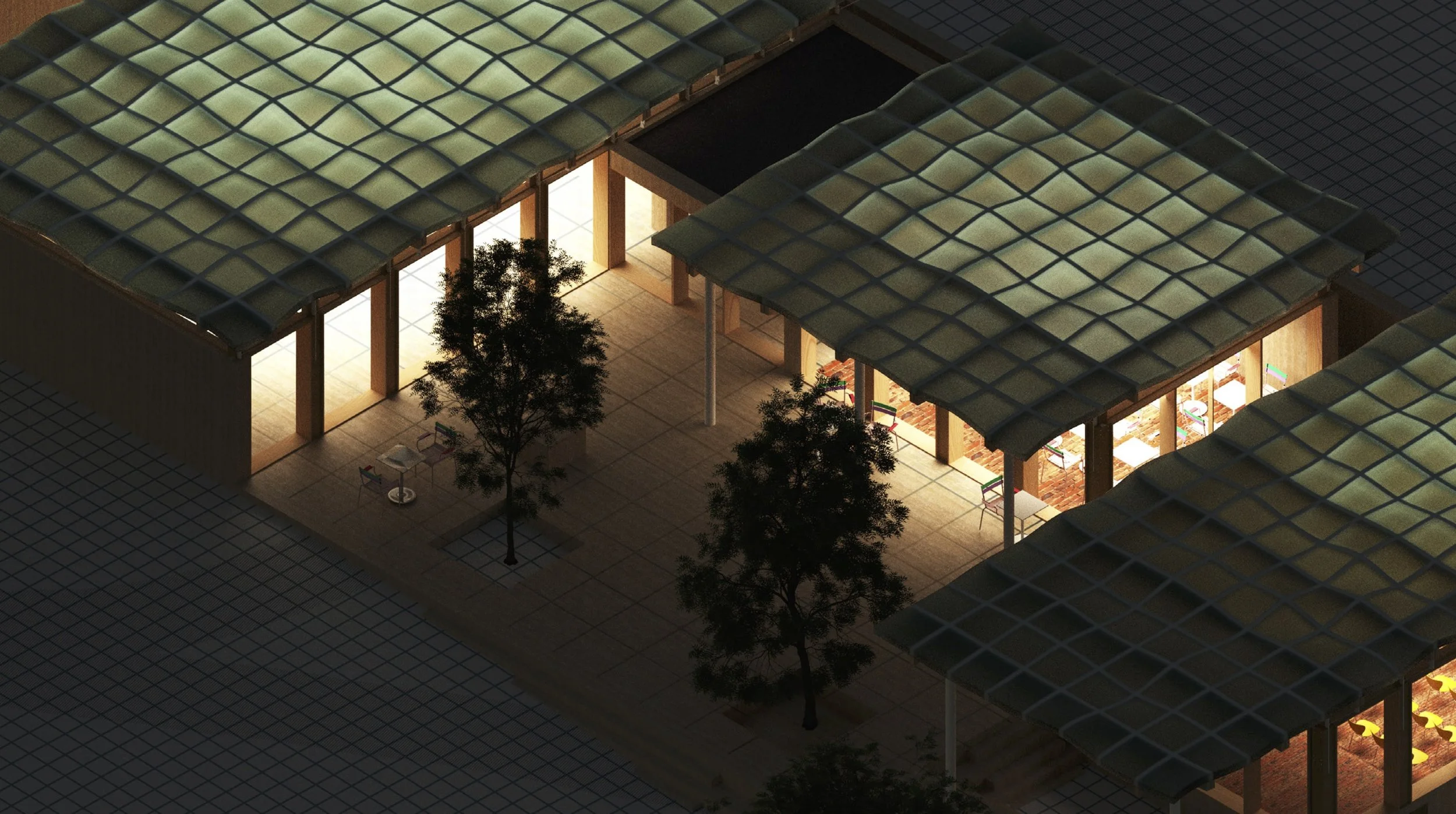Sense of community
2019
Aarhus school of architecture, bachelor thesis
Proposal for a community center in the rural Danish town of Feldballe, designed to facilitate low-barrier socialization and foster a sense of community through passive interaction, while offering the infrastructure for a third space for Feldballe’s inhabitants.
Facilitating community involves creating fertile ground for social gatherings. A place with a safe framework, that is easily accessible and comfortable to spend time in, can be some of the goals to strive for when fostering a sense of community. The role of the architect is not to create the gatherings themselves but to lay the groundwork for them.
In McMillan and Chavis’ model for social cohesion, the fourth element of community is built on a “shared emotional connection.” According to McMillan, this is the most important element for a “true community.” There is no concrete definition of what creates this shared emotional connection—it is something unique and special. Those who experience it know it exists, even if it may be impossible to explain exactly what it is. McMillan describes the intangible aspect as a “spiritual bond.” It is precisely this elusive element that is essential not to overlook. If the goal of a community center is to foster a genuine sense of community, focusing solely on tangible elements will not suffice. Churches have traditionally been the center of community in small towns. They are often built to embody the abstract—light, acoustics, and beauty.







